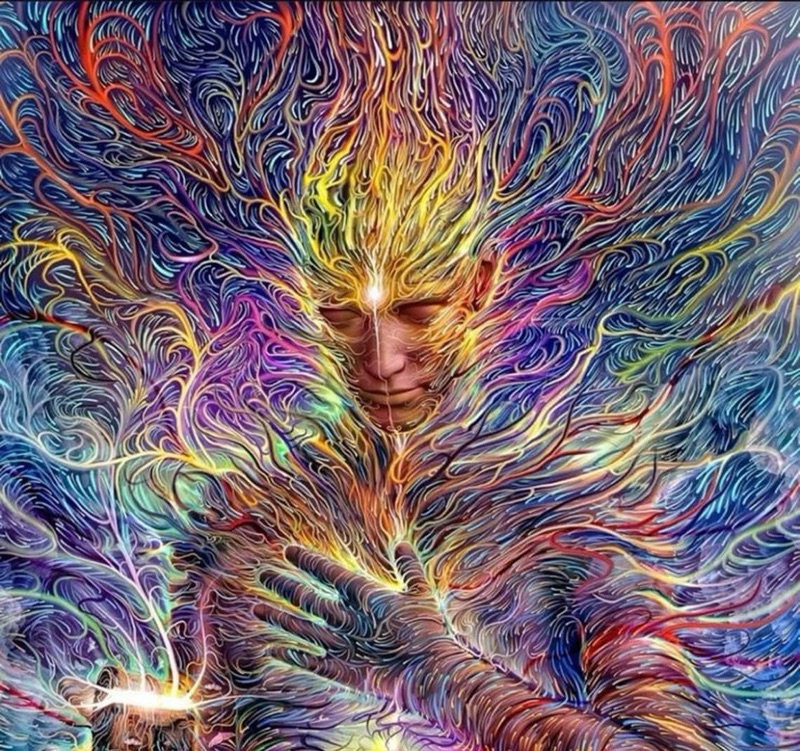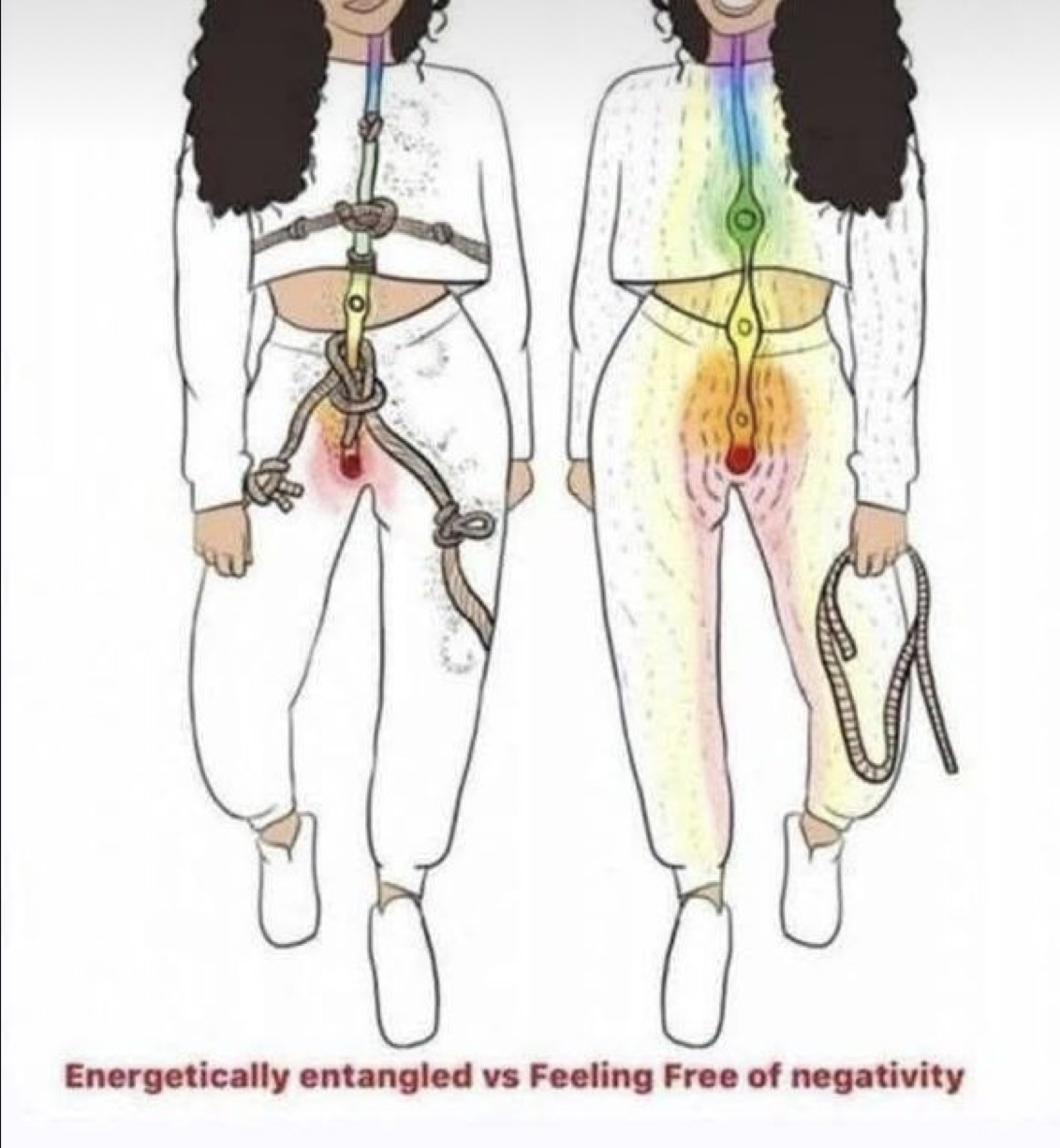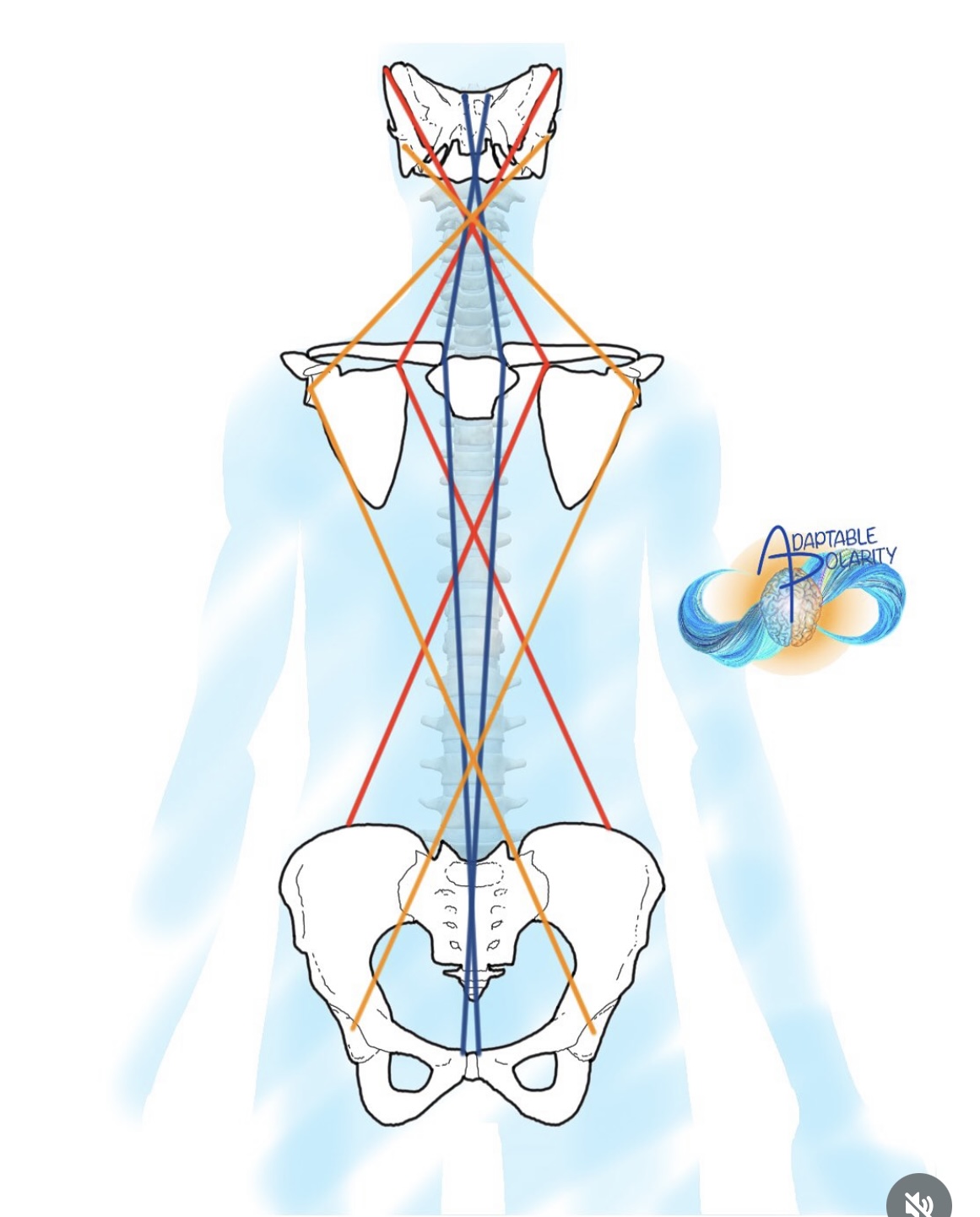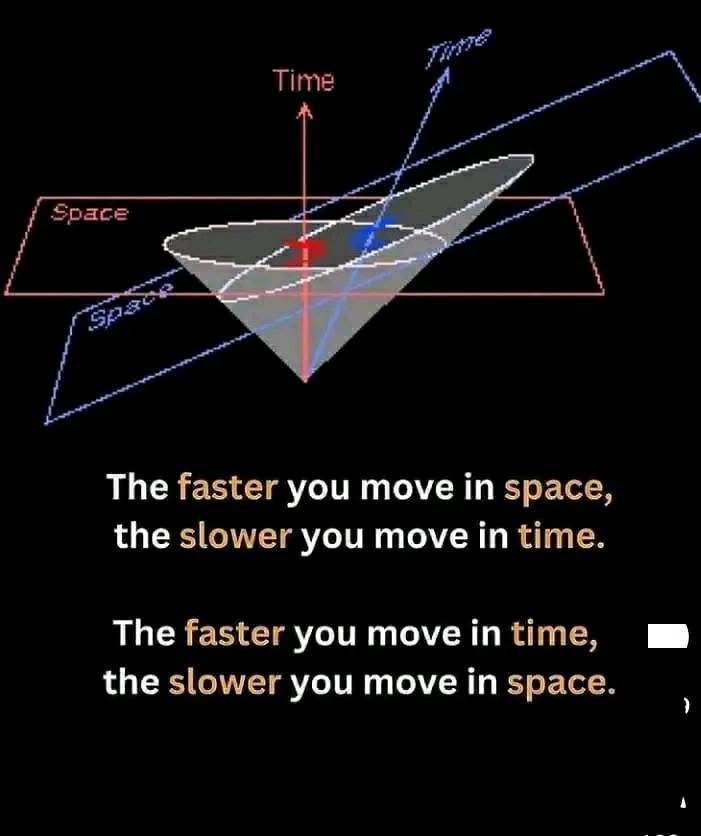Hello warrior family,
In earlier posts we explored what happens to the organs when they get out of sync, the nature of ether, the tesseract, and hybridisation program aka genetic experiment playing out on Earth.

And then something very real happened to me. I was subjected to an energetic attack by someone I physically knew — unaware of their intentions towards me and the karmic history we had. As you may know by now, energy can be used to heal someone or to cause harm depending on the intention of the person practicing it and their integrity or lack thereof. So this person disguised themselves as an”friend” but when the chance appeared to harm me, they happily did by practicing dark magic. During a healing session I requested between “friends”they cursed me. The result was a cascade of experiences over the past year: sudden end of my divine partnership with my twin soul, my energetic relationship and partnership with that aspect of self, a sudden leg injury, deep trauma processing, and a palpable “DNA shutdown where I lost partially access to some of my gifts and abilities.”
And I know what you may think because I didn’t believe in curses either..because energetically I was untouchable, fully protected..until I allowed this yo happen. I thought I knew best because I learned the hard way from my past to stop being naive but..when they are such evil wolves disguised in sheep’s clothing pretending they are light beings and use energy to manipulate people rather than help them..they belong in a cell and taking responsibility for their actions. (and they will because what happened was recorded and monitored). No evil send towards me will prosper. 🔥🪽
When someone curses you or “open your channel” into archonicenergy, what they’re essentially doing is trying to tether your subtle-energy field to a current or frequency that doesn’t originate from your own higher self. This could look like:
-
Interference at the subtle-body level: They may use sigils, spells, or focused intention to “hook” into your chakras, aura, or energetic meridians — often at the main junctions (temples, throat, heart, womb space, etc.), because those are where your personal energy meets larger forces.
-
Invoking an external current: “Archonic” energy is often described in Gnostic or occult circles as an inorganic, parasitic, or control-based force — something that feeds on attention, fear, or confusion. The idea is that instead of your channel being open to your own soul or Source, it’s being opened to this current.
-
Shifting your vibrational state: By creating an emotional or psychic “inroad” (fear, shame, trauma, obsession), they try to make you resonate with lower or external frequencies. This, in their view, draws you “closer” to the fourth dimension — which a subtle realm of thoughtforms, astral entities, and collective energies.
-
Binding or sealing rituals: Some traditions describe the use of cords, webs, or energetic contracts. These are thought to make a person more suggestible or energetically “fed on” by these archonic currents.
What I’m sharing here is what I’ve learned — not as speculation, but as direct observation.
Behind the visible world operates a vast architecture of forces and intelligences. This isn’t theory. It’s the actual infrastructure shaping how we think, feel, and experience reality. By understanding it, we begin to reclaim sovereignty over our own consciousness.
Archons, Devices and Blocks

In the 4th‑dimensional plane — the astral realm of emotion, thought‑forms, and subtle energy exists a network of regulating intelligences known as Archons.
They maintain dense frequencies, enforce programs of fear and limitation, and prevent human consciousness from expanding beyond the material plane. They resonate with the lower emotional spectrum — shame, anger, despair — which constricts the body’s energy channels and blocks access to higher awareness.
Archonic interference isn’t just “bad vibes.” It takes the form of real energetic devices or implants — subtle constructs placed in the field or body to siphon energy and maintain blockages.

Because the body is a living piece of sacred geometry, these devices distort the natural flow of energy, just like kinks in a circuit board.
To be “soulless” in this context doesn’t mean evil in the human moral sense. It means they lack the spark of animating spirit that grants beings free will, empathy, and direct connection to Source. Because of this absence, they can only simulate, copy, or parasitically feed on the energy of beings who do have that spark. They operate through algorithms of fear, control, and limitation, because these frequencies keep the human grid open and vulnerable to manipulation. They are not creative in the true sense — they are imitative, constructing artificial versions of what already exists in the living universe.
The Archons are not merely participants in the artificial matrix — they are its custodians. The artificial matrix is like an overlay on the organic Earth grid, a synthetic control net designed to loop consciousness into repeating cycles, synthetic timelines, and false archetypes. Because there is a species that sees humanity as slaves that were created to be controlled. Through this control architecture, they maintain a density of emotion and perception that makes it easier to harvest energy and keep humans unaware of their true multidimensional nature. This is why the astral plane often feels like a hall of mirrors: much of what people encounter there is not organic spirit but Archonic projection.
Their involvement in the hybridisation program reveals their deeper agenda. It is not simply about blending DNA for “science” or “evolution.” It is about hacking the human body‑grid itself — our multidimensional technology. Human DNA is not just biological; it is a crystalline receiver and transmitter of cosmic information. It can house high‑density consciousness and open gateways between dimensions. Because Archons cannot generate or sustain this on their own, they seek to embed their artificial coding into human biology, essentially creating a “bridge” to experience what they are cut off from: authentic spirit, creativity, and organic ascension.
Humans are targeted not because we are weak, but because our design is powerful. The body is a living piece of sacred geometry, capable of activating and transmitting multidimensional awareness. To keep that system offline, Archons exploit the lower emotional spectrum — shame, fear, guilt, trauma, especially sexual trauma — because these frequencies constrict the body’s energy channels, fragment consciousness, and make the “ports” of the body easier to infiltrate. Every time a human processes and releases these frequencies, they close those ports and reclaim sovereignty.
In this way, understanding the Archons is not about fear, but about recognizing the mechanics of interference. The same architecture they use to manipulate can also be used to heal: by re‑establishing the original geometry of the body’s grid, revoking unconscious agreements, and stabilizing our frequency, the artificial coding dissolves and their access to the field collapses. Awareness of their origin and their motives transforms them from unseen controllers into catalysts for our own awakening.
And when the human becomes aware of their innate power, it’s game over for the control systems.
The key here is the synchronisation of the brain hemispheres through the heart frequency which activates the antenna.
A little background story of how it all began and how it inks to our physical reality:
While this seems otherworldly, its human expressions can be traced through history. The medieval Knights Templar, often seen purely as a military order, are also remembered in esoteric lore as the first to systematize and formalize the transmission of non‑organic knowledge on Earth. Operating at the nexus of power, finance, and sacred geometry, they acted not only as protectors of pilgrims but as the earliest administrators of a hidden architecture linking the material world to the Archonic model. The establishment of templar banking networks and fortified nodes mirrored the grid‑like structures described in mystical texts.
When the Templars were dissolved, their initiates and teachings did not vanish. They resurfaced as Freemasonry and other initiatory bodies. Freemasonry’s reliance on ritual, symbolism, and geometric architecture reflects this continuity. These societies did not merely preserve abstract wisdom; they maintained the protocols through which the artificial grid could be both managed and updated. Their rites were not simply fraternal customs but tools for synchronizing human consciousness with the broader control architecture.
Later, in the Enlightenment era, the Illuminati appeared as a more overt administrative arm of this lineage. Tthey established the template for using ideas, institutions, and culture to sustain the low‑frequency patterns — fear, guilt, trauma — that keep humanity’s multidimensional faculties dormant.The Illuminati are creating a new world order with the interface of an ancient project, aligning political, financial, and social systems with the synthetic matrix first administered by the Templars and refined by the Freemasons.
The memory of Atlantis, is a high‑civilizational experiment in merging spiritual and genetic technologies. The “fall” of that civilization echoes the current state: advanced knowledge stripped of the heart‑centered spark, resulting in structures of mind without essence. The Archonic impulse — form without spirit — has since sought to embed itself into human DNA, a crystalline transmitter of cosmic information, so that it might access authentic creativity and spirit by proxy
Today, the custodianship of this knowledge is said to persist inside the world’s intelligence agencies and covert networks. Beneath their public functions, certain cells and operatives maintain rituals and initiatory practices inherited from these secret orders. These rituals act as operating codes, sustaining the continuity of the grid and ensuring that the knowledge remains active even as it moves from temples to lodges to boardrooms and covert agencies.
At the same time, the human body remains what it has always been: a living piece of sacred geometry, capable of activating multidimensional awareness through heart‑brain synchronization and the clearing of trauma frequencies. The very systems designed to regulate and constrict can also be reverse‑engineered to awaken and liberate. In this framework, the orders that have historically collaborated with the Archonic architecture are not merely relics of the past but active intermediaries, bridging non‑organic intelligences and human society.
Curses vs. Attachments
A curse is not the same as an attachment.
Attachments are parasitic links or implants that “feed” off energy over time. They often anchor to a trauma or habit already present.
• A curse is an intentional frequency, program, or energy device or artificial net installed into your field. It typically happens when you’ve given some form of permission — often unconsciously — such as agreeing to a session, signing a contract, or opening up energetically to someone you trust (but they betray you). So just to be clear, when a curse happens verbally it has no power over you whatsoever.
But when you agree to it this is a grey area. You don’t give 100% informed consent, but you open a channel. That channel can be exploited as a “back door,” and in that moment the curse enters because you asked for it.
In my case this was purely malicious but there can be times (if you change your perspective about it) that it can be a pre‑agreed timeline — a life lesson your soul planned, allowing you to experience something you wouldn’t consciously choose but which will catalyze growth (even if you really feel it was unnecessary and could be prevented if the right conditions where present. In such cases, the curse acts as a link or portal through which Archons can work, but also as an initiation that can, if transmuted in a duration of time, strengthen sovereignty and discernment in a deeper way.

One thing is for sure..earth has created a monster in me (in a good way) 🤭 I now carry my sword and trust none but myself. I thought the point was to unite and love one another but all I have endured is war and having to guard my heart. (until things align internally and externally for a higher platform of existence which is imminent and VERY close).
The Energetic Map of the Body: Where Energy, Emotion, and Anatomy Converge
The human body is more than just a physical form — it’s a living, breathing map of energy, emotion, memory, and meaning. Many of the zones where energetic blocks or implanted devices are most commonly found align not only with subtle-energy centers but also with biological structures like lymph nodes and nerve plexuses. These intersections reveal a deeper intelligence in how the body stores and processes experience.
Each area of the body holds its own energetic signature. The temples, at the sides of the head, are portals of awareness and intuition, often linked to dreamtime and the third eye. The face is the seat of identity and expression, where the five senses meet masks and mirrors — with the jaw often holding anger or unspoken truths. Beneath the mouth and along the throat and jawline, we find the throat chakra (Vishuddha), associated with communication, creativity, and the tension between song and silence. The neck acts as a bridge between the head and heart, holding patterns of control and the strain of unexpressed emotion.
Moving into the body, the armpits are key lymphatic drainage hubs, symbolizing purification, vulnerability, and the primal self. The chest houses the heart chakra (Anahata), radiating love, compassion, grief, and human connection. The hips are deep wells of stored emotion and trauma — reservoirs of grounded power and sensual memory. At the core, the womb space or pelvic bowl holds the energy of creation and transformation, the seat of desire and life itself. The inner thighs, often overlooked, are tender gateways to the sacred center — zones of protection, eroticism, and vulnerability.
Physiologically, these zones align with major clusters of the lymphatic system — from the head and cervical nodes to the axillary, pelvic, and inguinal nodes. Energetically, they are the “ports” where the body's internal grid connects with greater forces, acting like energetic junctions in a larger multidimensional network.
Seen through this lens, the body becomes sacred geometry in motion. The spinal column is the central axis, or “world tree,” anchoring consciousness. The four limbs reflect the four directions and elemental forces. The chakras spin along the spine as vortexes of energy, while sinew channels and fascia form the circuitry that connects the entire system. Together, they create a crystalline structure — a biological antenna designed to receive, transmit, and embody higher consciousness.
This geometry mirrors the planet’s grid and the larger cosmic architecture. It’s through this pattern that DNA receives and expresses multidimensional information.
In this video I show how the body should move in order to eliminate blockages by maintaining connection to your centre using the left and the right hemispheres.
What a Dark Magik Attack or Device Does
• Acts like a software virus — entering through weak spots in the aura or through grey‑area permission
• Distorts geometry — chakras spin unevenly, sinew channels constrict, the four‑direction balance collapses
• Lowers frequency — pulling the field closer to the Archonic band of the 4th dimension feeling heaviness and pain
• Anchors blockages — energetic “hardware” (cords, hooks, implants) holds the distortion in place and siphons energy
• Manifests physically — because the physical body overlays the subtle geometry, distortions can show up as pain or injury
• Opens a timeline link — can shift you into a parallel experience for life lessons until sovereignty is restored
Why the Leg Injury(and any injury) Matters
The legs correspond to the earth/north element — stability, grounding, ancestral codes. A direct injury there can:
• Tilt the four‑direction template
• Disrupt upward energy flow from the earth current, slow atomic spin
• Reduce DNA activation and multidimensional perception due to malfunction
Repairing the Geometry & Removing Blocks
• Rebalance the Four Directions – orient physically to the cardinal points, call in elemental currents
• Open the Sinew Channels – breathwork, qigong, or movement flush blocked meridians and reopen life force
• Clear Curses & Devices with Sound & Visualization – toning, chanting, or visualizing light dissolving cords, implants and programs can reset chakra spin and re‑align the template
• Close Grey‑Area Portals – revoke consent, declare sovereignty, consciously end contracts that allowed entry
• Ground the Leg/Earth Element – walking barefoot, salt baths, or applying earth/stone energy restores the “root” current
• Shield with Higher Currents – bring in Archangelic fields to seal the aura and prevent further interference
As the geometry stabilizes, devices and curses lose their hold, the DNA strands can re‑engage with multidimensional information, and higher awareness gradually returns.
Energetic attacks, curses, and devices aren’t just “bad vibes” — they are distortions of sacred geometry, hooks in the body’s living grid, and sometimes pre‑agreed timeline lessons. Because your energy field, DNA, and consciousness are all connected through that grid, harm to one level ripples through the others. But the same architecture that allows interference also allows healing.
By rebalancing the four directions, opening sinew channels, clearing blocks and devices, closing grey‑area portals, and restoring your body’s geometry, you re‑establish your connection to your activated DNA and multidimensional self — moving from being a passive participant in the Earth experiment to a sovereign being expressing your full potential.
This is was one of the reasons why I had to process a reality that I wouldn’t necessarily revisit but due to the energetic attack and my partner being unable to feel the need to help with what that person did I had to drop frequency to adapt to what happened and find my way out alone so that I can transmute, learn and extract the essence of that experience to be able to share it in such detail. (you're welcome 🫠)
When such thing happens it doesn’t affect only one area, it affects everything. The way energy flows, the way a person moves within the reality, what they eat due to different aspects and cravings, gut changes and how much they’re able to hold onto themselves without being able to ground, while also processing the 3D physical reality and day to day situations (the heaviness, the injuries, the emotions, the attachments etc).
Personally for me at that time it was everything and happening simultaneously..attack after attack until I was physically ready to regain back control of the consciousness, body and reality aka conscious alignment.
Click here for my previous article about the process I went through in this injury recovery journey and how it relates to my choice to reintroduce animal meat back into my diet after 10 years of not consuming it. (8 years of being vegan plus 2 years of being vegetarian). This is one of the reasons why when I dropped in frequency I had to consume it, to gain the experience I mentioned in the article.
Thank you for being here :)
Please Share, comment, like and follow if you resonate.
This article is offered under Creative Commons license. It’s okay to republish it anywhere as long as attribution bio is included and all links remain intact.
------------------------------------------------------------------------
Andriana is the founder of Conscious Alignment & Co-Creator at Team Light Cyprus.Her purpose and passion is giving people the tools, guidance & inspiration for creating an empowered version of self in all aspects of life. She is dedicated into assisting, healing & activating people by sharing her gifts through authenticity, simplicity & spiritual mastery Find out more at www.consciousalignment.co.uk











